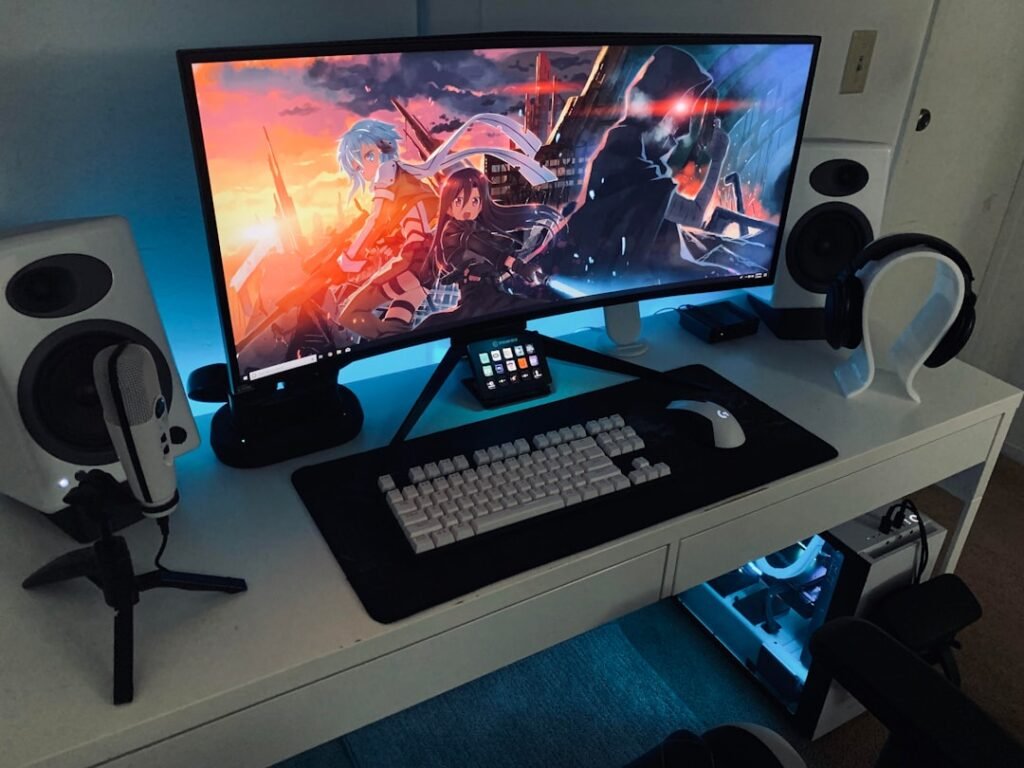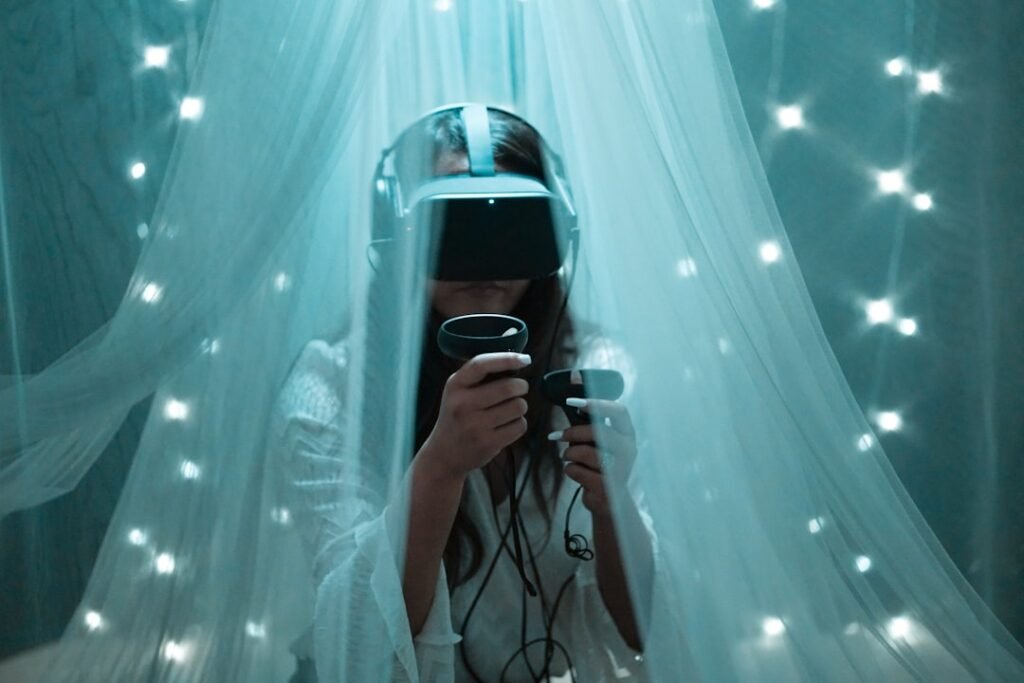Now Reading: What is Ray Tracing and Why Does It Matter in Gaming?
-
01
What is Ray Tracing and Why Does It Matter in Gaming?
What is Ray Tracing and Why Does It Matter in Gaming?

Breath-taking graphics in AAA titles to new-gen console and GPU marketing hype-these have been among the hottest topics over the last years. Hardly any other term has become more popular. But what is it actually, and why do people care so much about it? This one-size-fits-all guide goes into the inside story of physics behind the rays and actual implications of ray tracing on video gaming, along with why it indeed matters concerning visuals rendered very immersive.
The Basics Understanding Ray Tracing
In other words, ray tracing is a technique to render, by mimicking light behavior in the real worlds. Unlike other methods of rendering techniques, this process calculates every path of light-ray only for simulation of its way of interacting with surfaces, objects, and their materials. Really, true lighting, shadows, reflections, and refractions.
Examples
- When the light hits the shining object, the way it falls on the adjacent surfaces gets calculated.
- It simulates light traveling through partially opaque objects like glass or water.
- Shadows will be smoother and even more lifelike all thanks to the source of the light and environment.
Ray Tracing Vs. Traditional Rendering
Most of the current games are rasterized. Rasterization is fast and efficient but often relies on all sorts of trickery, from baked lighting and precomputed shadows to approximate some semblance of realism. Real-time ray tracing simulates the real behavior of real light to yield better visual fidelity than rasterized graphics.
- Some of the most significant differences between rasterization and ray tracing.
- Dimension Rasterization Ray Tracing
- Lighting Approximate Physically accurate
- Shadows Static or simplified Dynamic and realistic
Reflections Screen-space, only objects that appear Correct. Also, off-screen objects Performance Much faster and computationally less intensive More power to calculate How Ray Tracing Works in Games
The technique of ray tracing in games, does have hardware or software optimization. Modern market GPUs include NVIDIA’s RTX lineup and AMD’s RDNA 2 architecture, which provide dedicated hardware acceleration for ray computation. Now, finally, high-end algorithms produce images that are not only close to life-like but also, real-time ray tracing without a performance hit.
In general
Light Ray Simulation: The camera or the view of the player throws rays into a virtual scene
Surface Interaction: These hit surfaces and change color, texture, and reflectivity.
Global Illumination: These bounce off surfaces to create indirect lighting to build up the lightness in realizing illuminations
Final Rendering: This mathematical computation was rendered together on the GPU for image generation to mimic life-likeness beyond what can be imaginable
Why Ray Tracing Matters in Games
Ray tracing is not a buzzword but a method of changing the look and feel of games at their core. Here’s why it matters:
1. Unmatched Visual Realism
Game visuals made by ray tracing are far more than all graphics solutions used before in games can do. Water puddles can hold reflections, windows filter lights, and actual shadows make a world in the game almost come alive.
2. Immersion in High Degree
All that brings in the atmosphere is lit up by any game. Ray tracing helps lighting change based on the environment. Scenes become interesting and believable.
3. Smoother Game Development
Time saved by the developer through the use of ray tracing is simulated to create realistic effects and scenes. No more long hours spent on tweaking and tuning baked lighting and shaders to get as close to real-time effects in a scene.
Popular Games Utilizing Ray Tracing
Ray tracing has become an added feature into many games, enhancing realism with their visual effects. Amongst the most renowned are the following:
1. Cyberpunk 2077
Night City is filled with ray-traced reflections, neon lights, and dynamic shadows that amplify the dystopian ambiance.
2. Minecraft RTX
This sandbox game rejuvenates with the addition of ray tracing, thus giving this game amazing lighting, realistic shadows, and colorful effects.
3. Control
It’s taken to the extreme in the creepy ambiance of Control with its accurate reflection and real light effects.
4. Battlefield V
One of the oldest AAA games using ray tracing. It also had real-life reflections on water and metal surfaces.
5. Shadow of the Tomb Raider
Ray-traced shadows were added to enhance the jungle action of Lara Croft, further making it a realistic game.
Disadvantages of Ray Tracing Gaming
Even though there are so many advantages associated with this method, there are several disadvantages here too.
1. Performance Requirements
It requires much computing power; hence, it cannot be supported using old hardware. Even with the current generation of GPUs if not properly optimized, hitting high frame rates with ray tracing on can be hurting.
2. Hardware Cost
Hardware prices with ray tracing technology are mostly very high, e.g. the NVIDIA RTX or AMD RX series, hence it cannot be afforded by the budget gamers.
3. It is not being adopted widely.
Most games don’t support it and, in a few cases, even if they support it, then it is in some subtle and not-so-noticeable implementations.
This ray tracing technology, first of all, revolutionized the gaming world, while developers most often use this approach with a hybrid to balance performance and visuals. Examples include:
1. DLSS (Deep Learning Super Sampling)
DLSS is the technology that NVIDIA developed wherein AI up-scale the image which is much lower in resolutions such that they gain the best performances without losing any kinds of quality within images, therefore making it relatively easier to embrace ray tracing at high-performance games.
2. Screen-Space Reflections
This will involve fewer computes than reflections but with proper reflections across the elements on the screen, though this may not feature off-screen.
3. Precomputed Lighting
They do not contain real-time processing taken out from scenes or elements and have precompute lighting with a factor of ambient light for making one real.
Future Prospects of Ray Tracing in Gaming
Further hardware development will make ray tracing more pervasively useful and accessible. Future GPUs will operate better to be used in real-time with ray-tracing performance; new APIs, such as DirectX 12 Ultimate, are simplifying adoption; cloud gaming platforms, like NVIDIA GeForce NOW, have made ray-traced gaming possible without expensive hardware.
But again, with the advent of DLSS and AMD’s FSR (Fidelity Super Resolution), this delta between performance and visual quality will start to close out, and most users will get some form of ray tracing.
Conclusion
A technological jump, which brings the most unmatched realism to virtual worlds, is something that is going to be quite an extremely demanding requirement from a hardware perspective. Although this technology hasn’t caught up yet widely, no doubt it is going to change the game forever. The more advanced the technology is, and the more optimized the ray tracing turns out, the more impressive and immersive that would be, showing how casual, hardcore, even to its gamers and fans in this generation, it’s actually the beginning of this great new era for the world’s gaming.




























Pingback: How [Developer] Crafted [Game]'s Masterpiece